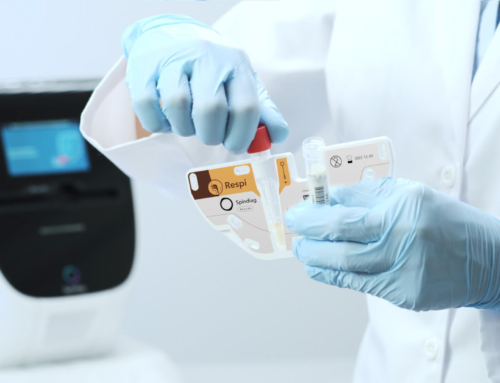When the SARS-CoV-2 pandemic broke out in 2020, we at Spindiag were working on our first product, a PCR rapid test to detect methicillin-resistant Staphylococcus aureus directly at the point of sample collection, the point of care (PoC). We were able to react agilely to the pandemic and changed our product strategy from one day to the next, focusing on the more prominent need to develop a previously unavailable SARS-CoV-2 test, instead. In the meantime, infection control for the detection of SARS-CoV-2 has become part of everyday life in hospitals, nursing homes and numerous other medical facilities. The pandemic has taught us that testing goes far beyond the detection of SARS Coronavirus 2 and has become a key topic on the global healthcare agenda. Reliable infection control will become even more important than ever before, because, in addition to viral pathogens such as SARS-CoV-2, drug- or antibiotic-resistant bacteria are once again back in focus and in particular have spread in COVID-19 patients further.¹ Recent data show that antimicrobial resistance (AMR), is among the greatest health threats worldwide, as it has the potential to put the pillars of our modern medicine at risk.
The silent pandemic: infections with drug-resistant bacteria.
On January 19, 2022, scientists from the Global Research on AntiMicrobial Resistance (GRAM) Project, based at Oxford University in the United Kingdom, published in The Lancet the most comprehensive study to date on antimicrobial resistance (AMR).² The alarming news is that infections caused by drug- or antibiotic-resistant bacteria are among the leading causes of death worldwide. According to the study, 4.95 million people died from diseases associated with antibiotic resistance in 2019. Of these, 1.27 million deaths were the direct result of infections caused by drug- or antibiotic-resistant bacteria. Only through joint efforts of all healthcare and life sciences stakeholders the spread of antimicrobial pathogens, often referred to as a silent pandemic, can be tackled. Ensuring targeted and reliable infection control in hospitals and other medical facilities is an important measure in this regard, especially when it comes to protect vulnerable groups.

Risk MRSA bacteria
Methicillin-resistant Staphylococcus aureus (MRSA) bacteria are among the most common hospital pathogens. MRSA are widespread throughout the world. While they are usually harmless in healthy people, they can be potentially life-threatening for immunocompromised, hospitalized patients. Data show that they cause about 171,000 invasive infections annually in Europe alone.³ According to the German Robert Koch Institute, approximately 20% of all Staphylococcus aureus infections are caused by the methicillin-resistant form of these bacteria in hospitals in Germany.⁴
Reliable infection control remains essential to keep the risk of infections with MRSA in hospitals as low as possible.
1 Segala, F.V.; Bavaro, D.F.; Di Gennaro, F.; Salvati, F.; Marotta, C.; Saracino, A.; Murri, R.; Fantoni, M. Impact of SARS-CoV-2 Epidemic on Antimicrobial Resistance: A Literature Review. Viruses 2021, 13, 2110. https://doi.org/10.3390/v13112110
2 Antimicrobial Resistance Collaborators. Global burden of bacterial antimicrobial resistance in 2019: a systematic analysis. Lancet. 2022 Feb 12;399(10325):629-655. https://doi.org/10.1016/S0140-6736(21)02724-0
3 Larsen, J., Raisen, C.L., Ba, X. et al. Emergence of methicillin resistance predates the clinical use of antibiotics. Nature 602, 135–141 (2022). https://doi.org/10.1038/s41586-021-04265-w
4 https://www.rki.de/DE/Content/Infekt/EpidBull/Merkblaetter/Ratgeber_Staphylokokken_MRSA.html





